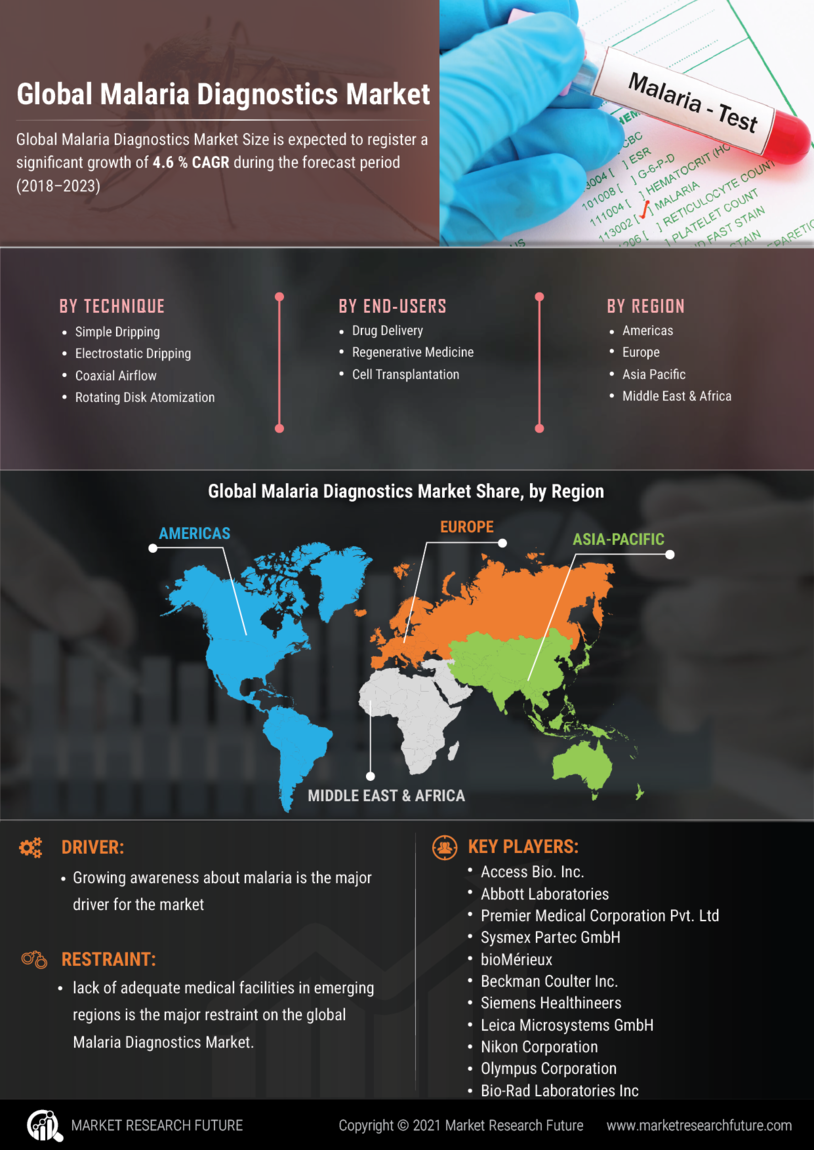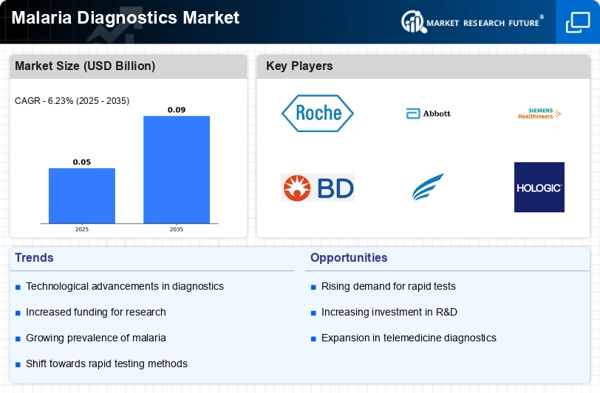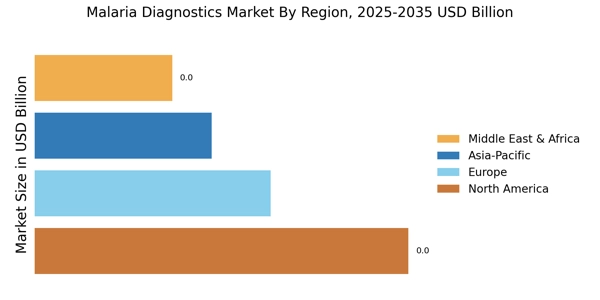Rising Incidence of Malaria
The increasing incidence of malaria in various regions appears to be a primary driver for the Malaria Diagnostics Market. According to recent estimates, there are approximately 229 million cases of malaria reported annually, with a significant proportion occurring in sub-Saharan Africa. This rising trend necessitates the development and deployment of effective diagnostic tools to facilitate timely treatment and control measures. As malaria continues to pose a substantial public health challenge, the demand for accurate and rapid diagnostic tests is likely to surge. Consequently, stakeholders in the Malaria Diagnostics Market are focusing on innovative solutions to address this pressing need, thereby enhancing disease management and reducing mortality rates.
Growing Awareness and Education
The rising awareness and education regarding malaria prevention and control are driving the Malaria Diagnostics Market. Public health campaigns and educational programs are increasingly emphasizing the importance of early diagnosis and treatment. This heightened awareness is leading to greater demand for diagnostic tools among healthcare providers and patients alike. As communities become more informed about the symptoms and risks associated with malaria, the likelihood of seeking timely medical attention increases. Consequently, this trend is expected to stimulate the market for malaria diagnostics, as healthcare systems strive to meet the growing demand for effective testing solutions. The emphasis on education is likely to play a pivotal role in shaping the future of the Malaria Diagnostics Market.
Government Initiatives and Funding
Government initiatives aimed at combating malaria are significantly influencing the Malaria Diagnostics Market. Various countries are implementing national malaria control programs that prioritize the development and distribution of diagnostic tools. For instance, funding from international organizations and government bodies has increased, with investments exceeding USD 3 billion annually for malaria control efforts. These initiatives not only enhance access to diagnostics but also promote research and development of novel testing methods. As governments recognize the importance of early detection in malaria management, the support for diagnostic innovations is likely to bolster the market, ensuring that healthcare systems are equipped to tackle the disease effectively.
Technological Innovations in Diagnostics
Technological advancements in diagnostic tools are transforming the Malaria Diagnostics Market. Innovations such as rapid diagnostic tests (RDTs) and polymerase chain reaction (PCR) techniques are becoming increasingly prevalent. These technologies offer enhanced sensitivity and specificity, enabling healthcare providers to diagnose malaria more accurately and swiftly. The market for RDTs alone is projected to reach USD 1.5 billion by 2026, reflecting a growing preference for point-of-care testing. Furthermore, the integration of digital health technologies, including mobile applications for data collection and analysis, is likely to improve surveillance and response strategies. As these technologies evolve, they are expected to play a crucial role in shaping the future landscape of the Malaria Diagnostics Market.
Emerging Markets and Increased Investment
Emerging markets are becoming increasingly important in the Malaria Diagnostics Market. Countries with high malaria prevalence are attracting investment from both public and private sectors, aiming to enhance their healthcare infrastructure. The World Health Organization has reported that investments in malaria diagnostics in these regions could lead to a reduction in disease burden by up to 40%. This potential for growth is encouraging companies to develop tailored diagnostic solutions that cater to the specific needs of these markets. As investments continue to flow into malaria diagnostics, the industry is likely to witness significant advancements, ultimately improving access to essential diagnostic tools in areas most affected by malaria.


















Leave a Comment